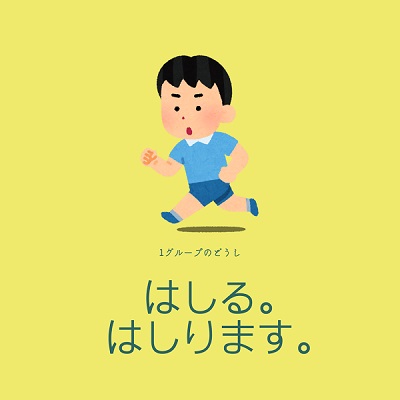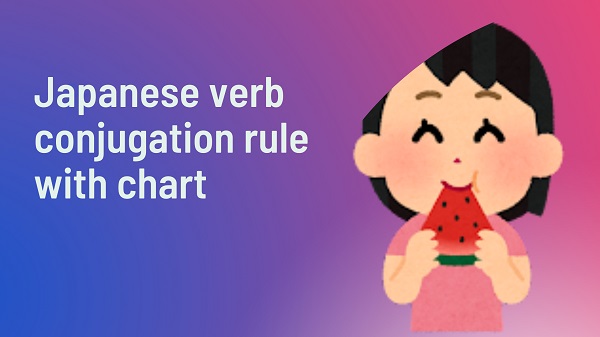There are three groups for Japanese verb conjugation.
I will teach you the groups and polite form in this article.
Japanese conjugation
There are three groups for verb conjugation.
Let’s take a closer look.
Group1
Basically, group 1 verb’s end with a “u” sound.
For example, かう(kau), かく(kaku), きく(kiku), のむ(nomu) and so on.
Some text books explain group 1 verbs as U verbs.
Group2
Basically, group 2 are verbs which ends with iru or eru.
For example, みる(miru), たべる(taberu), きる(kiru)and so on.
Some text books explain group 2 as Ru verb.
However, there are many exceptions and you will need to memorize the exceptions.
Group3
group 3 are composed of irregular verbs.
There are two irregular verbs in Japanese, which are くる(kuru) and する(suru).
Polite form
Group1

Some text books explain polite form as ます(masu) form because we add ます end of verb.
u changes into i sound and we add masu.
For example, あるく(aruku) changes into あるき(aruki) and then you add ます, so you get あるきます(arukimasu).
はしる(hashiru), this is an exception to group 1, it becomes はしります(hashirimasu).

Group2
Group 2 is easier than group 1.
Just take る(ru) and add ます(masu).
For example, みる(miru).
We take る and ます, so it becomes みます(mimasu).
たべる(taberu) becomes たべます(tabemasu).

Group3
These are irregular verbs, so you will need to remember them.
する(suru)becomes します(shimasu).
くる(kuru) becomes きます(kimasu).
Polite form chart
| Group | ますform conjugation |
| Group1 | u sound→iます。 (れい)たつ→たちます |
| Group2 | Take ru and add masu (れい) みる→みます たべる→たべます |
| Group3 | Irregular verb する→します くる→きます |
If you would like to practice conjugation in conversation, please let me know.
I teach Japanese in person or online.
You will have chances to use Japanese in my class.
↓Please feel free contact me.
↓You can also learn Japanese on my Instagram.



